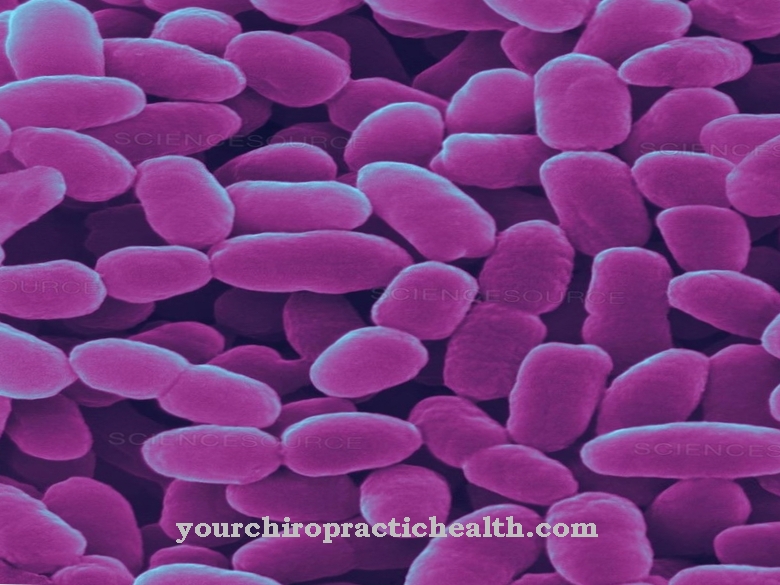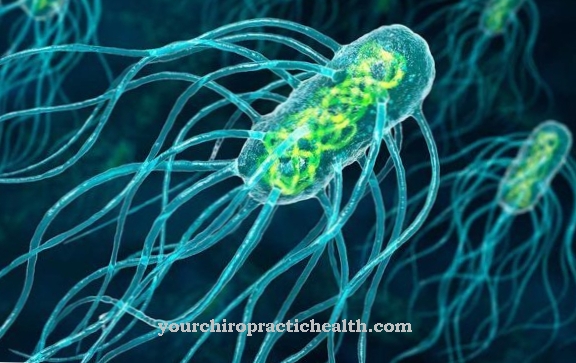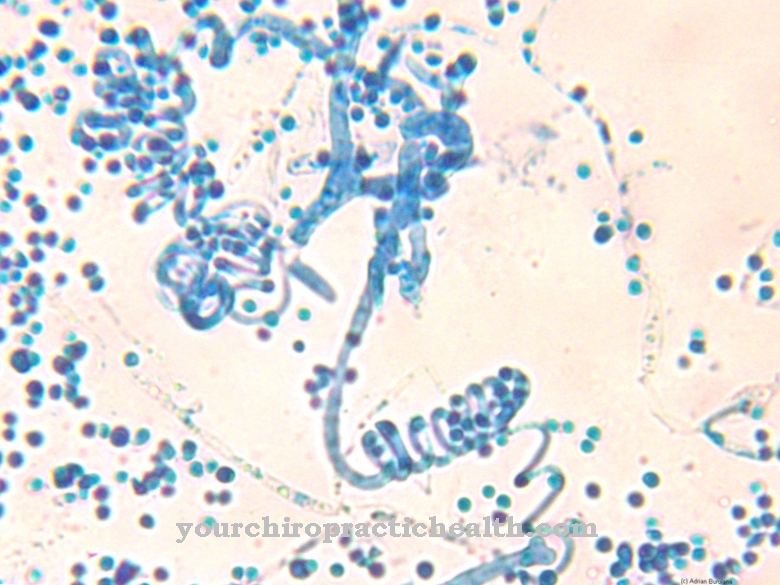bacteria occur in and on humans in great numbers. While some bacteria are good for health, other bacteria can be harmful to health. Bacteria should not be confused with bacilli, a rod-shaped genus of motile bacteria.
What are bacteria

bacteria are microorganisms and reach an average size of 0.5 to 5 micrometers. Bacteria are unicellular and multiply through simple cell division. Unlike many living cells, bacteria do not have a nucleus.
Depending on their shape and structure, bacteria can be divided into three basic forms. These basic types include cocci (e.g. staphylococci), rods (e.g. bacilli or salmonella) and helical bacteria. The term cocci is derived from the Greek and means something like berries or balls.
The approximate diameter of these bacteria is one micrometer. Bacteria, called rods, are rod-shaped according to their name. The coils of helical bacteria are often clearly visible under a light microscope.
Meaning & function
Take over in a healthy body bacteria many important functions. For example, there are many types of beneficial bacteria in the human intestine. In their interaction, these bacteria form the so-called intestinal flora, which has a beneficial effect on the digestive processes. About 99% of all microorganisms in the human body are found here.
A large number of bacteria can also be found on human skin, which form the so-called skin flora. One of the tasks of the skin flora is to protect the skin and the organism from invading, pathogenic (disease-causing) germs. Other health-promoting bacteria are found in the small intestine, the throat, the oral cavity or on the mucous membrane of the female vagina.
So that health-promoting bacteria can take over their tasks without restriction, it is important that the bacterial flora of the organism is composed correctly; useful bacteria must be present in a constant and sufficient quantity.
Many bacteria are able to produce enzymes or substances with an antibiotic effect that are important for humans. Medicine also makes use of this property. For example, drugs such as antibiotics or insulin are produced with the help of bacteria such as the so-called Escherichia coli bacteria. This is done by using the metabolism of the corresponding bacteria in a targeted manner.
Bacteria in the human body that bring neither a scientifically measurable benefit nor a measurable harm are referred to as so-called commensals. Furthermore, there are bacteria in the human body that draw nutrients from the body, but can also prevent harmful bacteria from settling. These forms of bacteria are therefore known as symbionts.
Diseases

Occasionally it can actually be health promoting bacteria also exert damaging influences on the body. This is the case, for example, when bacteria leave their actual milieu in the human body and enter another milieu. For example, beneficial bacteria in the colon in the urinary tract can lead to cystitis.
In addition to the beneficial bacteria, there are a large number of bacteria that damage the human body and are therefore also known as pathogens. The damaging influence of such bacteria comes from the so-called bacterial toxins, which are secreted by bacteria. Various poisons released by living bacteria can trigger infectious diseases such as scarlet fever, tetanus (also known as tetanus), whooping cough, or diphtheria (a disease of the upper respiratory tract).
Dying bacteria can also emit toxins as they break down. For example, a certain form of typhoid can be caused by salmonella (rod-shaped bacteria). Some bacteria can release toxins so powerful that they can be used as biological weapons.
Depending on the form, disease-causing bacteria can be transmitted from one person to another in different ways. A possible transmission of bacteria is possible through the air, through water or through various body fluids such as saliva, urine or blood.
Bacteria are also able to mutate within a certain period of time, so that they can no longer be fought with drugs such as certain antibiotics, for example. These bacteria develop so-called resistances and therefore represent a major health threat. You can also read our articles on the latter: MRSA infection and ESBL infection.

















.jpg)



.jpg)

.jpg)




